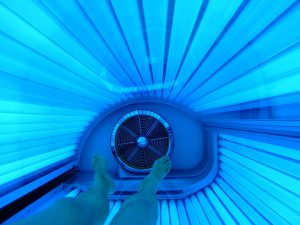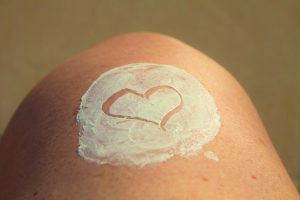May is National Melanoma Skin Cancer Awareness Month, so there is no better time to shine a light on this type of cancer, including how to identify it, and how to protect yourself. Melanoma, the deadliest of skin cancers, is one of the most commonly diagnosed cancers in the United States. Detecting melanoma early is crucial to increasing your chances of survival; in fact, the 5-year survival rate for patients who receive an early diagnosis and get treated immediately is 98%, meaning 98 out of 100 people will survive for at least 5 years after diagnosis. The risk of melanoma increases with age, with an average diagnosis age of 65. Because this potentially deadly cancer affects many people 65 and older, knowing how Medicare covers detection and treatment is also important.
Melanoma Survival Rates
Melanoma survival rates are based on a 5-year time frame. The “5-year survival rate” refers to the percentage of patients who live at least 5 years after their cancer is diagnosed. The later the stage that the melanoma is diagnosed at, the lower the chances of survival past 5 years. This is why it is important to keep track of any changes in your skin or moles. The average survival rates for each stage of diagnosis is as follows:

- Stage 0: The 5-year relative survival rate is 98%.
- Stage 1: The 5-year survival rate is 90-95%. If a sentinel node biopsy shows any signs of melanoma in the lymph nodes, the 5-year survival rate is roughly 75%.
- Stage 2A: The 5-year relative survival rate is approximately 85%. If a biopsy shows any signs of melanoma in the lymph nodes, the 5-year survival rate is around 65%.
- Stage 2B: The 5-year relative survival rate is around 72-75%. If a biopsy shows any signs of melanoma in the lymph nodes, the 5-year survival rate is lowered to 50-60%.
- Stage 2C: The 5-year relative survival rate is around 53%. If a biopsy shows any signs of melanoma in the lymph nodes, the 5-year survival rate is lowered to 44%.
- Stage 3: The 5-year survival rate is around 45%. It’s higher if the melanoma has spread to only one lymph node, but if it spread to more than 3 lymph nodes, then it is lower.
- Stage 4: The 5-year survival rate for stage 4 melanoma is around 10%.
ABCDEs of Melanoma
Skin cancer generally affects the skin on the neck, hands and face. It starts out on the outer layer of the skin, eventually spreading to deeper skin levels and other parts of the body. Melanoma is the most serious type of skin cancer and has distinct features that are easy to learn and remember by using the ABCDE rule:
- A for Asymmetry- Most cancerous moles are asymmetrical; if you were to draw a line through the middle of it, one half would not match the other.
- B for Border– The border, or edges of the mole or spot is irregular, uneven, scalloped, or poorly defined. Common moles are generally smoother.
- C for Color– Another warning sign of melanoma is a mole that is different colors, including tan, shades of very dark brown or black. As the mole grows, shades of red, white, or blue might appear.
- D for Diameter– Moles or spots that are wider than a pencil eraser should also be checked.
- E for Evolving– If the mole changes color, shape or size, this could be a warning sign of melanoma.
Risk Factors

You have a higher chance of developing melanoma if you:
- Are older
- Have fair skin
- Have a history of sunburn
- Use tanning beds often
- Are exposed to sunlight often
Diagnosis & Treatment
In order to check if a mole is cancerous, your doctor may order a biopsy, or removal of the skin lesion. In the event that the test results come back positive for melanoma, there are various treatments that could follow:
- Surgery- cutting out the lesion
- Chemotherapy
- Photodynamic therapy- drugs administered followed by exposure to a light source to destroy cancerous cells.
- Radiation therapy- using beams of high energy X-rays to kill cancer cells.
- Immunotherapy
- Chemical peel- using a chemical solution to dissolve the top layer of the skin.
- Targeted therapy- use of drugs to attack cancer cells.
Medicare Coverage For Screenings & Treatment
Cancer screenings are important for early diagnosis and improving a person’s chances of surviving. Fortunately, Medicare covers these screenings, as well as treatment for cancers including melanoma. Medicare Part A will cover cancer treatments that involve inpatient hospital stays. Medicare Part B will cover cancer screenings, and if you are diagnosed with cancer, Part B will cover further assessment and the above mentioned forms of treatment as long as they are deemed medically necessary by a doctor. Part B will only cover 80% of these expenses, leaving you to pay the remaining 20% out-of-pocket.
Prevention & Extra Coverage

Your best defense against melanoma is to be aware of it! Always check yourself and take note of existing moles or lesions that grow or change, including new ones that pop up. If in doubt, get it checked, and if you have already been diagnosed with melanoma, follow up regularly with your doctor after treatment.
If the 20% out-of-pocket costs associated with Medicare are too much for you financially, you should consider a Medicare Supplement Plan to help. For the price of a low monthly premium, a Medicare Supplement Plan will cover out-of-pocket expenses, such as coinsurance and copays. There are 10 different plans to choose from, so you are sure to find one that suits your needs financially and medically.
To get free instant quotes on Medicare Supplement Plans, simply enter your zip code in the bar above. Or to speak to a licensed EZ agent in your area, call 888-753-7207. We will compare all the available Medicare Supplement Plans in your area and find a plan that will help you save money throughout the year. No hassle or obligation.


